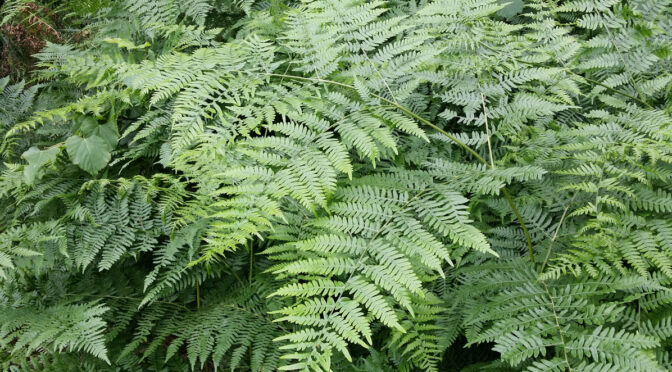Views: 1042
400 million years ago, much was already happening on Earth. Vast land masses, quite different from the continents we know today, were releasing sediments that would drift into the sea. Imagine tiny particles of clay, carried by wind or rain, slowly sinking and layering on top of each other over eons.
Pressure, stillness, and the passage of infinite time transformed these layers into rock, which orogenic forces would eventually push to the surface. These rocks, forming the oldest geological layers in the north of Menorca, show dark hues at sites like Cap Negre or Favàritx.
While these ancient materials were shaping the future landscape of Menorca, certain algae began venturing onto land in an atmosphere thick with CO₂. From this early migration would come ferns, a life form that predates flowering and fruiting plants.
Scientists believe that ferns once dominated swampy areas for immense periods, slowly capturing carbon and gaining mass in dense, expansive formations. Much of the plant material they produced sank into oxygen-poor waters, where it gradually formed vast deposits of organic matter that would become coal and gas.
For two centuries, humans have burned through the remains of these ancient ferns, returning carbon to the atmosphere and fueling the greenhouse effect. As a result, some of the heat from the sun now gets trapped on Earth.
The impact is already visible. Fruit trees yield less because winters are too short. Greenhouse structures are now essential to protect crops from intense summer heat. We are witnessing the need to adapt.
New policies are urging people to move away from managing vegetation waste through open burning, which emits significant carbon. Instead, we could try something different.
A promising idea, only now being explored in Menorca, is to use controlled, low-oxygen combustion to convert this plant waste into biochar.
Partially burned matter decomposes much more slowly—a fact well known to archaeologists who find toasted grains in ancient Talaiotic settlements. Biochar, according to experts, is excellent for supporting soil microbiology and retaining moisture. Mixing it with compost and adding it to the land could help sequester carbon in the long term and improve soil fertility. Pilot projects could help verify its potential benefits for the island.
With autumn’s arrival, ferns emerge from their summer dormancy, dotting the moist paths. Their curled fronds unfurl slowly, reaching upward. The top of each frond resembles the neck of a violin, as though they are unspooling a slow melody.
These plants have always fascinated us, embodying a resilience that has carried them through every major extinction. In a few months, their spores will ripen underneath the leaves, ready to disperse again as they have for countless millennia.
If they could speak, perhaps they would offer wise counsel to the world’s “most intelligent” species.
(This text is an adaptation of the original article published by Miquel Camps, as coordinator of territorial policy for the GOB, in the Menorca newspaper on 28/10/2024).

